Fabrication of a Sulfur/Steel Slag-Based Filter and Its Application in the Denitrification of Nitrate-Containing Wastewater
Abstract
1. Introduction
2. Materials and Methods
2.1. Raw Materials for Experiments
2.2. Preparation of Denitrification Filter Media
2.3. Simulated Wastewater Denitrification Experiment
2.4. Experimental Setup
2.5. Experimental Methodology
2.6. Testing and Characterization
3. Results
3.1. Investigation of Nitrogen Removal Performance for Simulated Wastewater
3.2. Impact Factor Investigation
3.3. Analysis of the Effect of Tandem Nitrogen Removal
3.4. Investigation of Nitrogen Removal Performance of Actual Wastewater
3.5. Microbiological Analysis
3.6. Comparison of Microscopic Morphology of the Filters before and after Use
3.7. Work Mechanism of the Filter
4. Conclusions
Author Contributions
Funding
Data Availability Statement
Conflicts of Interest
References
- Lucchetti, R.; Onotri, L.; Clarizia, L.; Natale, F.D.; Somma, I.D.; Andreozzi, R.; Marotta, R. Removal of nitrate and simultaneous hydrogen generation through photocatalytic reforming of glycerol over “in situ” prepared zero-valent nano copper/P25. Appl. Catal. B Environ. 2017, 202, 539–549. [Google Scholar] [CrossRef]
- Espejo-Herrera, N.; Cantor, K.P.; Malats, N.; Silverman, D.T.; Tardón, A.; García-Closas, R.; Serra, C.; Kogevinas, M.; Villanueva, C.M. Nitrate in drinking water and bladder cancer risk in Spain. Environ. Res. 2015, 137, 299–307. [Google Scholar] [CrossRef]
- Pang, Y.; Wang, J. Various electron donors for biological nitrate removal: A review. Sci. Total Environ. 2021, 794, 148699. [Google Scholar] [CrossRef]
- Sahinkaya, E.; Kilic, A. Heterotrophic and elemental-sulfur-based autotrophic denitrification processes for simultaneous nitrate and Cr(VI) reduction. Water Res. 2014, 50, 278–286. [Google Scholar] [CrossRef] [PubMed]
- Wu, F.; Zeng, Z.; Zhang, W.; Li, H.; Zhou, L.; Zhuang, W.Q. Functional bacteria and their genes encoding for key enzymes in hydrogen-driven autotrophic denitrification with sulfate loading. J. Clean. Prod. 2024, 440, 140901. [Google Scholar] [CrossRef]
- Yang, J.; Qin, Y.; Liu, X.; Yang, L.; Zheng, S.; Gong, S.; Liu, Z.; Wu, C.; Lin, X.; Lu, T.; et al. Effects of different electron donors on nitrogen removal performance and microbial community of denitrification system. J. Environ. Chem. Eng. 2022, 10, 107915. [Google Scholar] [CrossRef]
- Jian, C.; Hao, Y.; Liu, R.; Qi, X.; Chen, M.; Liu, N. Mixotrophic denitrification process driven by lime sulfur and butanediol: Denitrification performance and metagenomic analysis. Sci. Total Environ. 2023, 903, 166654. [Google Scholar] [CrossRef] [PubMed]
- Fu, M.; Qiu, S.; Wang, J.; Zhu, Y.; Yuan, M.; Wang, L. Tourmaline mediated enhanced autotrophic denitrification: The mechanisms of electron transfer and Paracoccus enrichment. Sci. Total Environ. 2024, 915, 169847. [Google Scholar] [CrossRef] [PubMed]
- Di Capua, F.; Pirozzi, F.; Lens, P.N.L.; Esposito, G. Electron donors for autotrophic denitrification. Chem. Eng. J. 2019, 362, 922–937. [Google Scholar] [CrossRef]
- Ma, Y.; Li, J.; Zheng, Z.; Chen, G.; Wang, H.; Yue, L.; Li, Q.; Liu, Y. Establishment and optimization of sulfur-based autotrophic-heterotrophic denitrification biofilters for advanced post-anaerobic treatment of effluent from kitchen wastewater and landfill leachate under low temperature. Bioresour. Technol. 2023, 393, 130155. [Google Scholar] [CrossRef] [PubMed]
- Fan, C.; Zhou, W.; He, S.; Huang, J. Sulfur transformation in sulfur autotrophic denitrification using thiosulfate as electron donor. Environ. Pollut. 2021, 268, 115708. [Google Scholar] [CrossRef] [PubMed]
- Di Capua, F.; Ahoranta, S.H.; Papirio, S.; Lens, P.N.L.; Esposito, G. Impacts of sulfur source and temperature on sulfur-driven denitrification by pure and mixed cultures of Thiobacillus. Process Biochem. 2016, 51, 1576–1584. [Google Scholar] [CrossRef]
- Liang, J.; Chen, N.; Tong, S.; Liu, Y.; Feng, C. Sulfur autotrophic denitrification (SAD) driven by homogeneous composite particles containing CaCO3-type kitchen waste for groundwater remediation. Chemosphere 2018, 212, 954–963. [Google Scholar] [CrossRef] [PubMed]
- Li, Y.; Wang, Y.; Wan, D.; Li, B.; Zhang, P.; Wang, H. Pilot-scale application of sulfur-limestone autotrophic denitrification biofilter for municipal tailwater treatment: Performance and microbial community structure. Bioresour. Technol. 2020, 300, 122682. [Google Scholar] [CrossRef]
- Sarfo, P.; Wyss, G.; Ma, G.; Das, A.; Young, C. Carbothermal reduction of copper smelter slag for recycling into pig iron and glass. Miner. Eng. 2017, 107, 8–19. [Google Scholar] [CrossRef]
- Yi, H.; Xu, G.; Cheng, H.; Wang, J.; Wan, Y.; Chen, H. An Overview of Utilization of Steel Slag. Procedia Environ. Sci. 2012, 16, 791–801. [Google Scholar] [CrossRef]
- Wu, H.; Wu, M.; Wu, X.; Zhang, F.; Zhang, J.; Qiao, H.; Zhang, Y.; Zhang, Y. Study on the performance of collapsible loess subgrade improved by steel slag. J. Build. Eng. 2024, 84, 108642. [Google Scholar] [CrossRef]
- GB3838-2002; Environmental Quality Standards for Surface Water of the People’s Republic of China. PRC Environmental Protection Agency: Beijing, China, 2002.
- HJ/T346-2007; Determination of Nitrate Nitrogen in Water by Ultraviolet Spectrophotometric Method. PRC Environmental Protection Agency: Beijing, China, 2007.
- GB7493-87; Determination of Nitrite Nitrogen in Water by Spectrophotometric Method. PRC Environmental Protection Agency: Beijing, China, 1987.
- GB/T39305-2020; Determination of Fluorine, Chlorine, Nitrite, Nitrate and Sulphate in Reclaimed Water by Ion Chromatography. PRC Environmental Protection Agency: Beijing, China, 2020.
- Liu, J.; Zhang, P.; Li, H.; Tian, Y.; Wang, S.; Song, Y.; Zeng, G.; Sun, C.; Tian, Z. Denitrification of landfill leachate under different hydraulic retention time in a two-stage anoxic/oxic combined membrane bioreactor process: Performances and bacterial community. Bioresour. Technol. 2018, 250, 110–116. [Google Scholar] [CrossRef] [PubMed]
- Li, Z.; Zhang, X.; Wang, H.; Cheng, H.; Wang, A.; Zhang, Y.; Cui, C.; Sun, Y. Effects of salinity on sulfur-dominated autotrophic denitrification microorganisms: Microbial community succession, key microorganisms and response mechanisms. Chem. Eng. J. 2023, 478, 147308. [Google Scholar] [CrossRef]
- Wang, Y.; Bott, C.; Nerenberg, R. Sulfur-based denitrification: Effect of biofilm development on denitrification fluxes. Water Res. 2016, 100, 184–193. [Google Scholar] [CrossRef]
- Li, Y.; Guo, J.; Li, H.; Song, Y.; Chen, Z.; Lu, C.; Han, Y.; Hou, Y. Effect of dissolved oxygen on simultaneous removal of ammonia, nitrate and phosphorus via biological aerated filter with sulfur and pyrite as composite fillers. Bioresour. Technol. 2020, 296, 122340. [Google Scholar] [CrossRef]
- Li, C.; Liu, S.; Ma, T.; Zheng, M.; Ni, J. Simultaneous nitrification, denitrification and phosphorus removal in a sequencing batch reactor (SBR) under low temperature. Chemosphere 2019, 229, 132–141. [Google Scholar] [CrossRef]
- Shao, L.; Wang, D.; Chen, G.; Zhao, Z.; Fan, L. Advance in the sulfur-based electron donor autotrophic denitrification for nitrate nitrogen removal from wastewater. World J. Microbiol. Biotechnol. 2023, 40, 7. [Google Scholar] [CrossRef]
- Chen, F.; Li, X.; Gu, C.; Huang, Y.; Yuan, Y. Selectivity control of nitrite and nitrate with the reaction of S(0) and achieved nitrite accumulation in the sulfur autotrophic denitrification process. Bioresour. Technol. 2018, 266, 211–219. [Google Scholar] [CrossRef]
- Blažková, Z. Influence of Fe3+ Ions on Nitrate Removal by Autotrophic Denitrification Using Thiobacillus denitrificans. Chem. Biochem. Eng. Q. 2017, 31, 167–172. [Google Scholar] [CrossRef]
- Fu, K.; Kang, J.; Zhao, J.; Bian, Y.; Li, X.; Yang, W.; Li, Z. Efficient nitrite accumulation in partial sulfide autotrophic denitrification (PSAD) system: Insights of S/N ratio, pH and temperature. Environ. Technol. 2023, 20, 11–18. [Google Scholar] [CrossRef] [PubMed]
- Wang, Y.; Xu, W.; Yang, X.; Ren, Z.; Huang, K.; Qian, F.; Li, J. Long-Term Operation of a Pilot-Scale Sulfur-Based Autotrophic Denitrification System for Deep Nitrogen Removal. Water 2023, 15, 428. [Google Scholar] [CrossRef]
- Zhang, H.; Quan, H.; Zhou, S.; Sun, L.; Lu, H. Enhanced performance and electron transfer of sulfur-mediated biological process under polyethylene terephthalate microplastics exposure. Water Res. 2022, 223, 119038. [Google Scholar] [CrossRef] [PubMed]
- Bai, Y.; Wang, S.; Zhussupbekova, A.; Shvets, I.V.; Lee, P.H.; Zhan, X. High-rate iron sulfide and sulfur-coupled autotrophic denitrification system: Nutrients removal performance and microbial characterization. Water Res. 2023, 231, 119619. [Google Scholar] [CrossRef] [PubMed]
- Peng, Y.; Gu, X.; Zhang, M.; Yan, P.; Sun, S.; He, S. Simultaneously enhanced autotrophic-heterotrophic denitrification in iron-based ecological floating bed by plant biomass: Metagenomics insights into microbial communities, functional genes and nitrogen metabolic pathways. Water Res. 2023, 248, 120868. [Google Scholar] [CrossRef] [PubMed]
- Liu, T.; Hu, Y.; Chen, N.; He, Q.; Feng, C. High redox potential promotes oxidation of pyrite under neutral conditions: Implications for optimizing pyrite autotrophic denitrification. J. Hazard. Mater. 2021, 416, 125844. [Google Scholar] [CrossRef] [PubMed]
- Chen, X.; Yang, L.; Chen, F.; Song, Q.; Feng, C.; Liu, X.; Li, M. High efficient bio-denitrification of nitrate contaminated water with low ammonium and sulfate production by a sulfur/pyrite-based bioreactor. Bioresour. Technol. 2022, 346, 126669. [Google Scholar] [CrossRef] [PubMed]
- Guo, G.; Li, Z.; Chen, L.; Ling, Q.; Zan, F.; Isawi, H.; Hao, T.; Ma, J.; Wang, Z.; Chen, G.; et al. Advances in elemental sulfur-driven bioprocesses for wastewater treatment: From metabolic study to application. Water Res. 2022, 213, 118143. [Google Scholar] [CrossRef] [PubMed]
- Deng, Y.-F.; Wu, D.; Huang, H.; Cui, Y.-X.; van Loosdrecht, M.C.M.; Chen, G.-H. Exploration and verification of the feasibility of sulfide-driven partial denitrification coupled with anammox for wastewater treatment. Water Res. 2021, 193, 116905. [Google Scholar] [CrossRef]
- Fu, X.; Hou, R.; Yang, P.; Qian, S.; Feng, Z.; Chen, Z.; Wang, F.; Yuan, R.; Chen, H.; Zhou, B. Application of external carbon source in heterotrophic denitrification of domestic sewage: A review. Sci. Total Environ. 2022, 817, 153061. [Google Scholar] [CrossRef] [PubMed]
- Du, J.; Xu, B.; Ma, L.; Jiao, H.; Tian, B.; Li, K.; Liang, J. Study on denitrification of hydroponic wastewater reverse osmosis concentrate using sulfur-autotrophic denitrification. J. Environ. Chem. Eng. 2023, 11, 111195. [Google Scholar] [CrossRef]
- Yang, W.; Zhao, Q.; Lu, H.; Ding, Z.; Meng, L.; Chen, G.-H. Sulfide-driven autotrophic denitrification significantly reduces N2O emissions. Water Res. 2016, 90, 176–184. [Google Scholar] [CrossRef]
- Rahimi, S.; Modin, O.; Mijakovic, I. Technologies for biological removal and recovery of nitrogen from wastewater. Biotechnol. Adv. 2020, 43, 107570. [Google Scholar] [CrossRef]
- Wang, S.; Gao, B.; Liu, S.; Chen, N.; Ma, W.; Wang, R.; Wu, J.; Yu, Y. Nitrogen removal performance and bacterial flora analysis of a nitrification-sulphur autotrophic denitrification coupled with permeable reaction wall (NSAD+PRW) treating rare earth mine groundwater. J. Water Process Eng. 2023, 55, 104136. [Google Scholar] [CrossRef]
- Zhang, J.; Fan, C.; Zhao, M.; Wang, Z.; Jiang, S.; Jin, Z.; Bei, K.; Zheng, X.; Wu, S.; Lin, P.; et al. A comprehensive review on mixotrophic denitrification processes for biological nitrogen removal. Chemosphere 2023, 313, 137474. [Google Scholar] [CrossRef]
- Weralupitiya, C.; Wanigatunge, R.; Joseph, S.; Athapattu, B.C.L.; Lee, T.-H.; Kumar Biswas, J.; Ginige, M.P.; Shiung Lam, S.; Senthil Kumar, P.; Vithanage, M. Anammox bacteria in treating ammonium rich wastewater: Recent perspective and appraisal. Bioresour. Technol. 2021, 334, 125240. [Google Scholar] [CrossRef] [PubMed]
- Jiang, X.-T.; Ye, L.; Ju, F.; Wang, Y.-L.; Zhang, T. Toward an Intensive Longitudinal Understanding of Activated Sludge Bacterial Assembly and Dynamics. Environ. Sci. Technol. 2018, 52, 8224–8232. [Google Scholar] [CrossRef] [PubMed]
- Booali, S.; Zoufan, P.; Bavani, M.R.Z. Effect of biofertilizer containing Thiobacillus bacteria along with different levels of chemical sulfur fertilizer on growth response and photochemical efficiency of small radish plants (Raphanus sativus L. var. shushtari) under greenhouse conditions. Sci. Hortic. 2024, 327, 112835. [Google Scholar] [CrossRef]
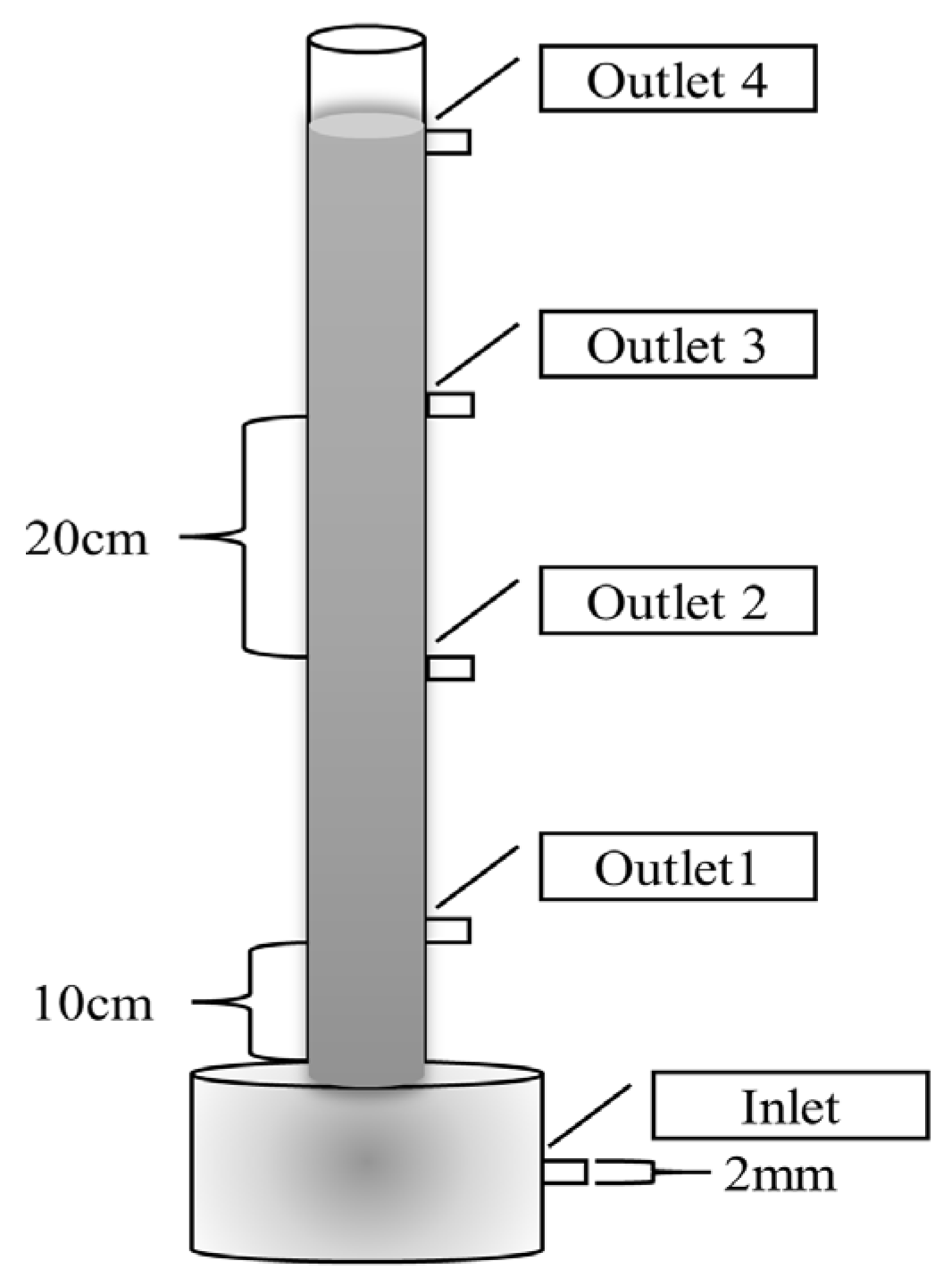
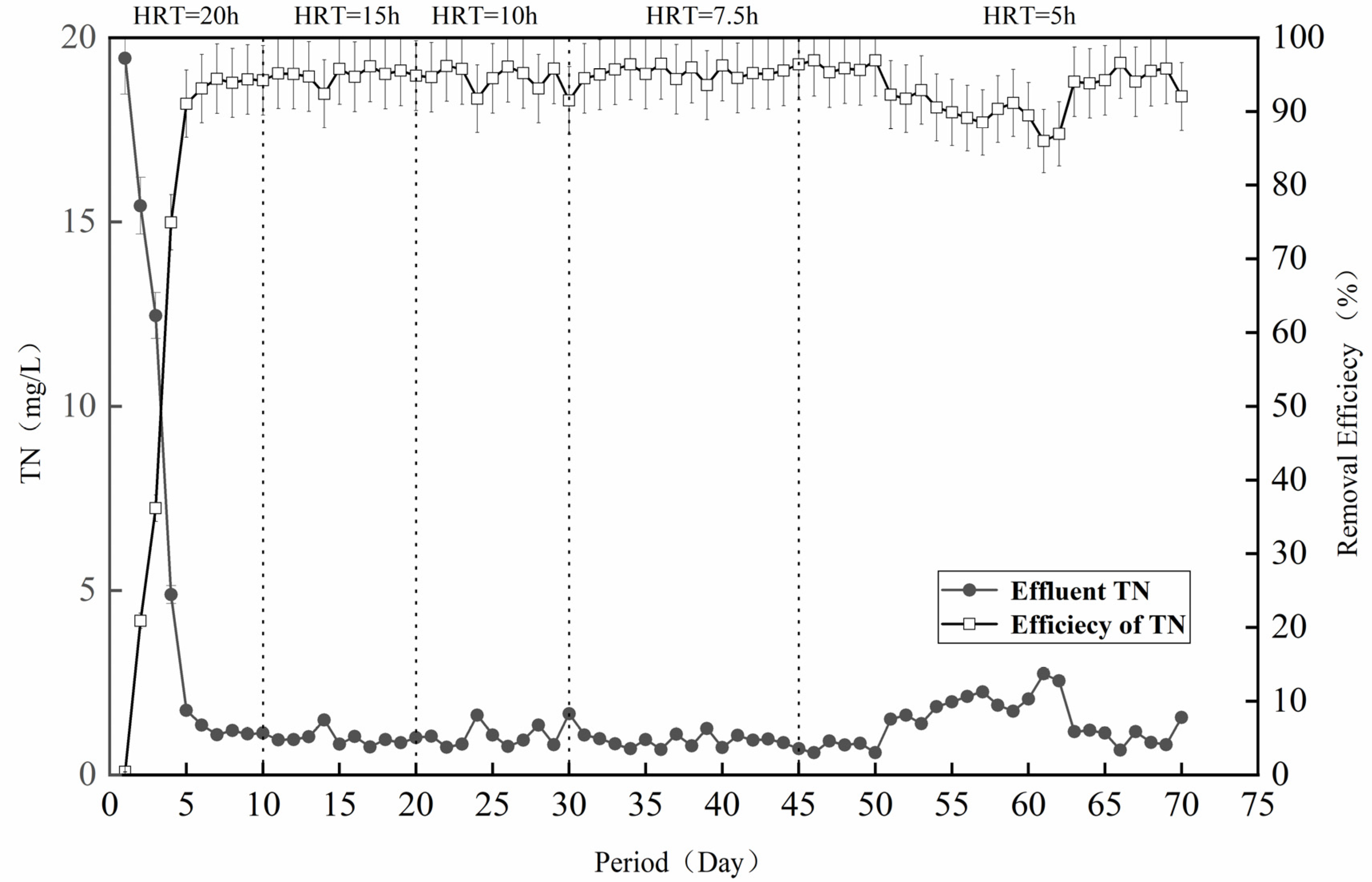
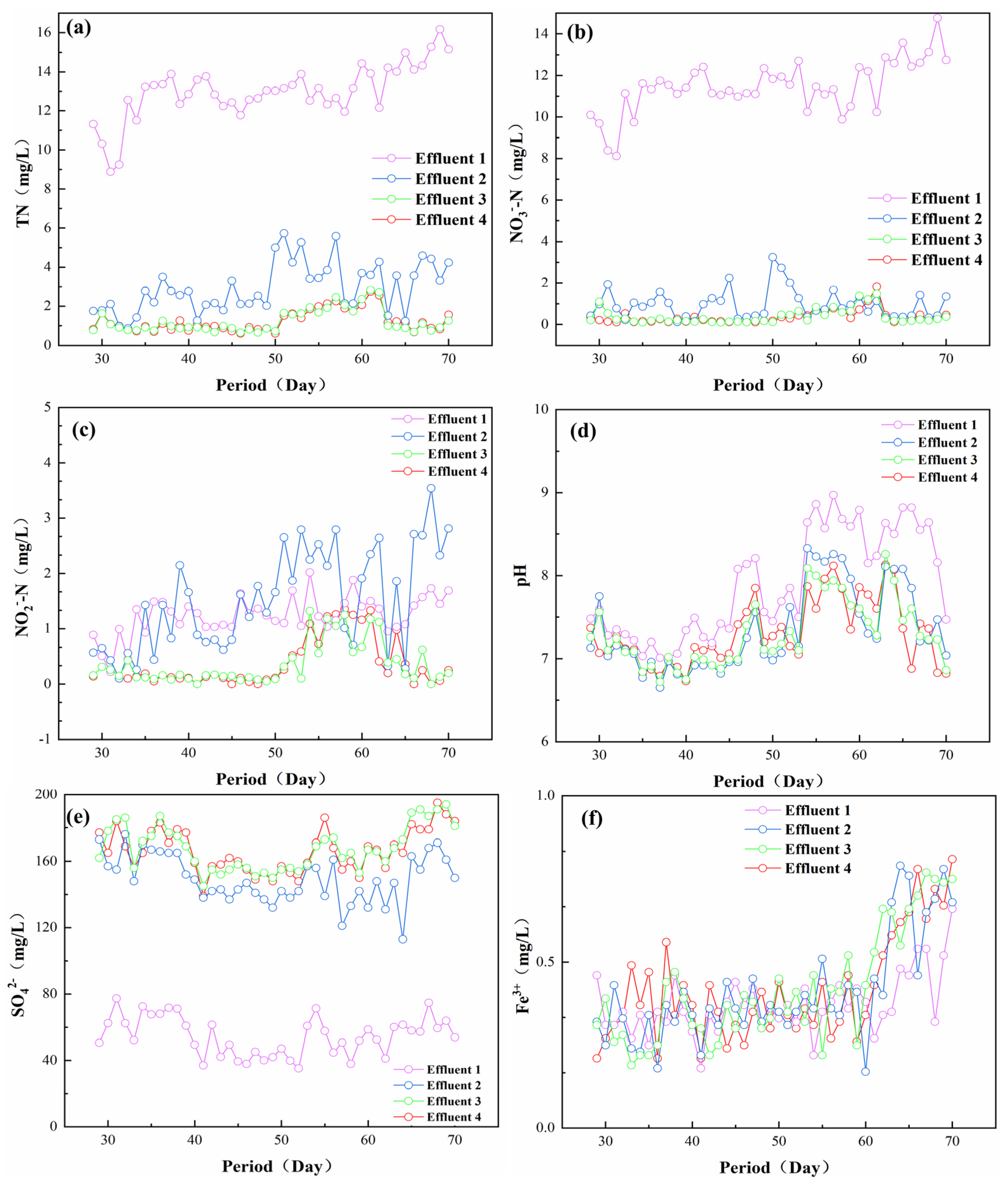
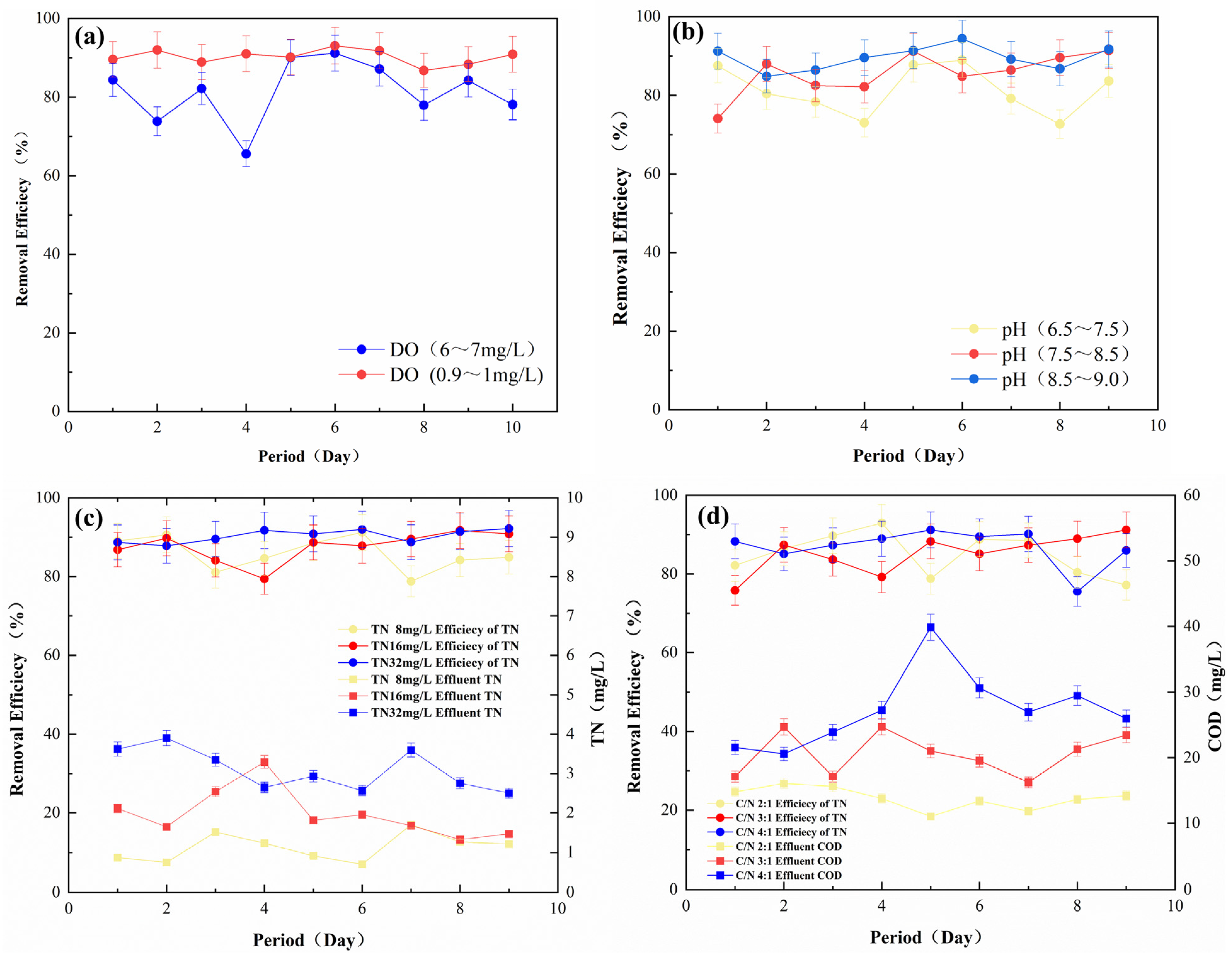
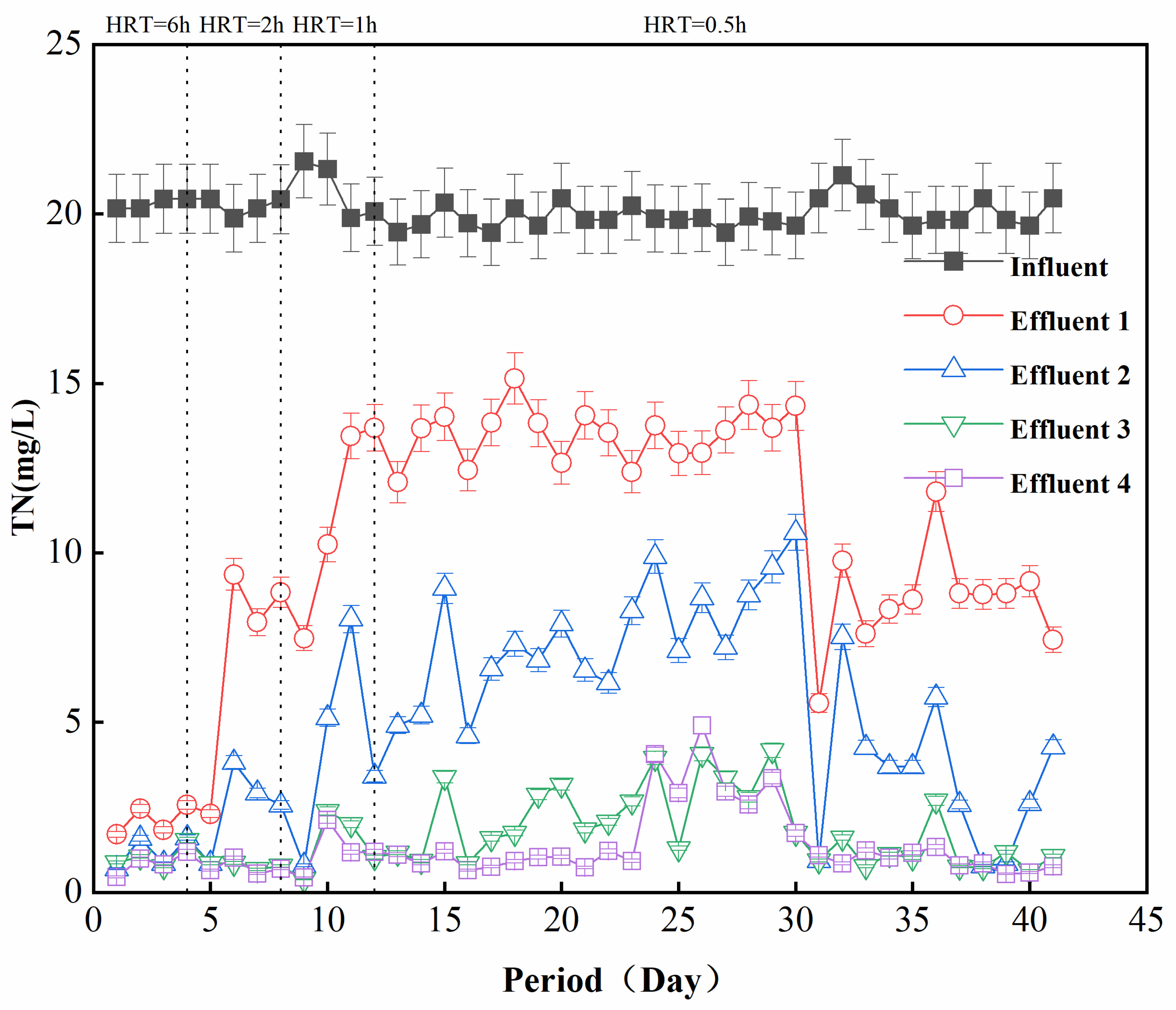
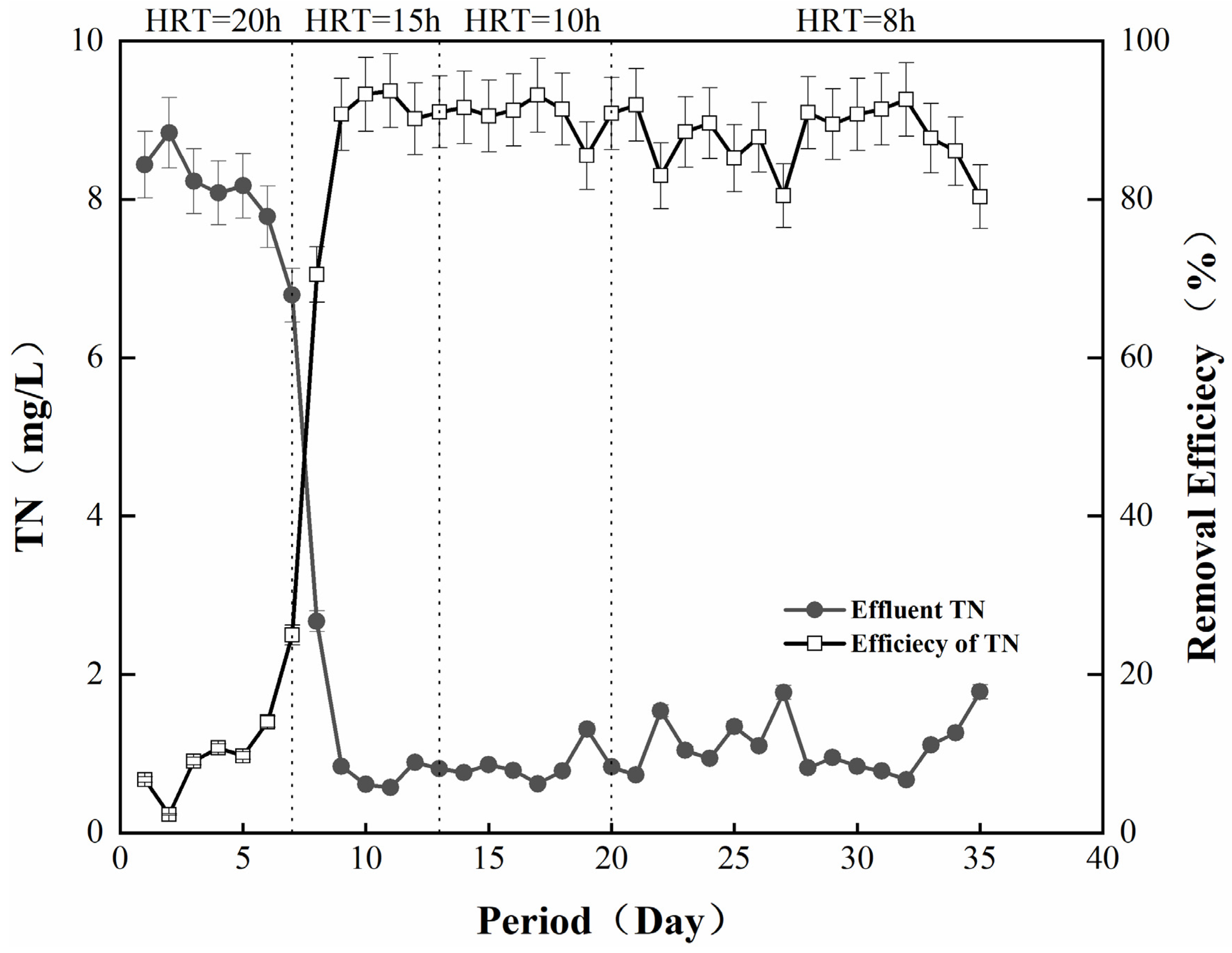
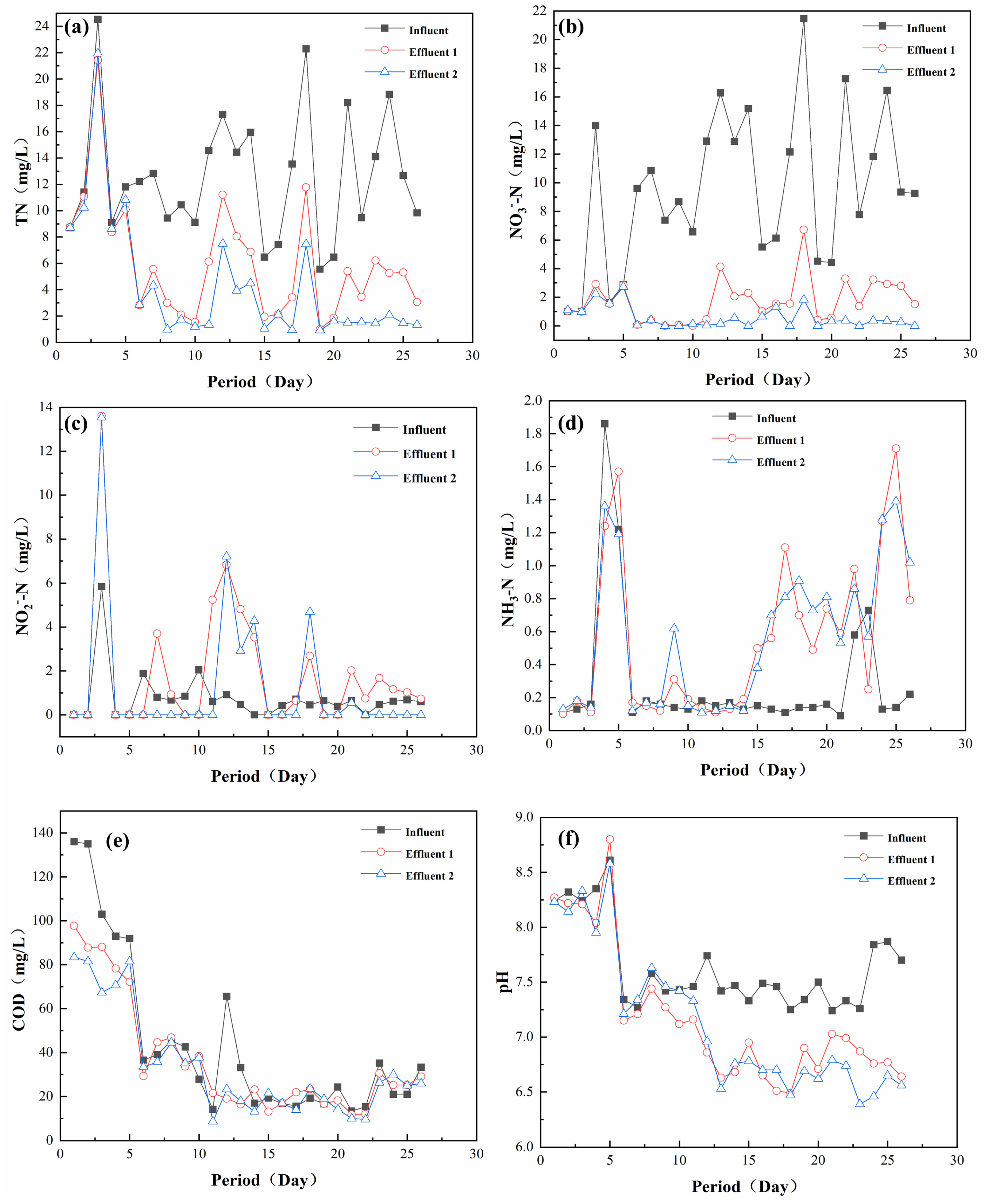
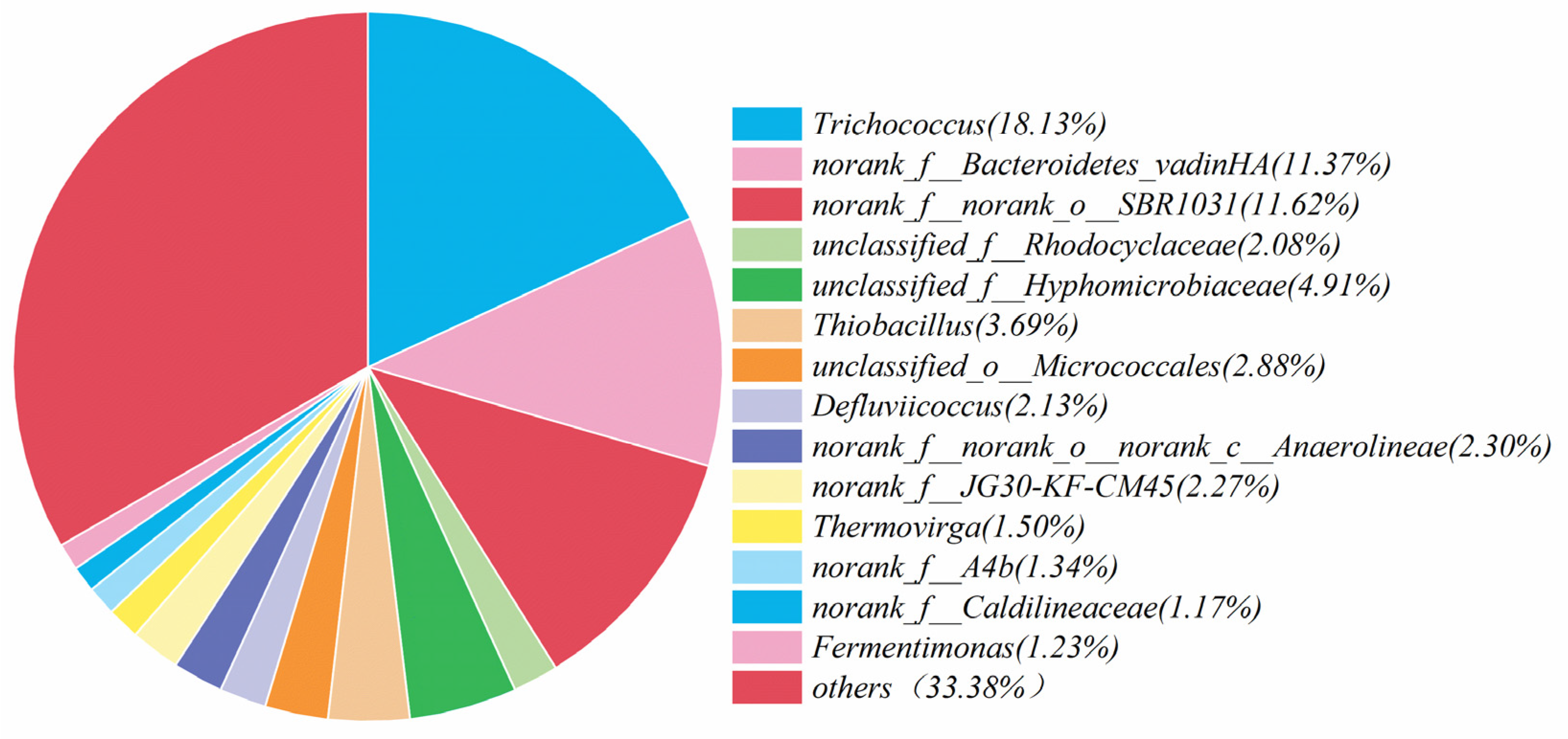
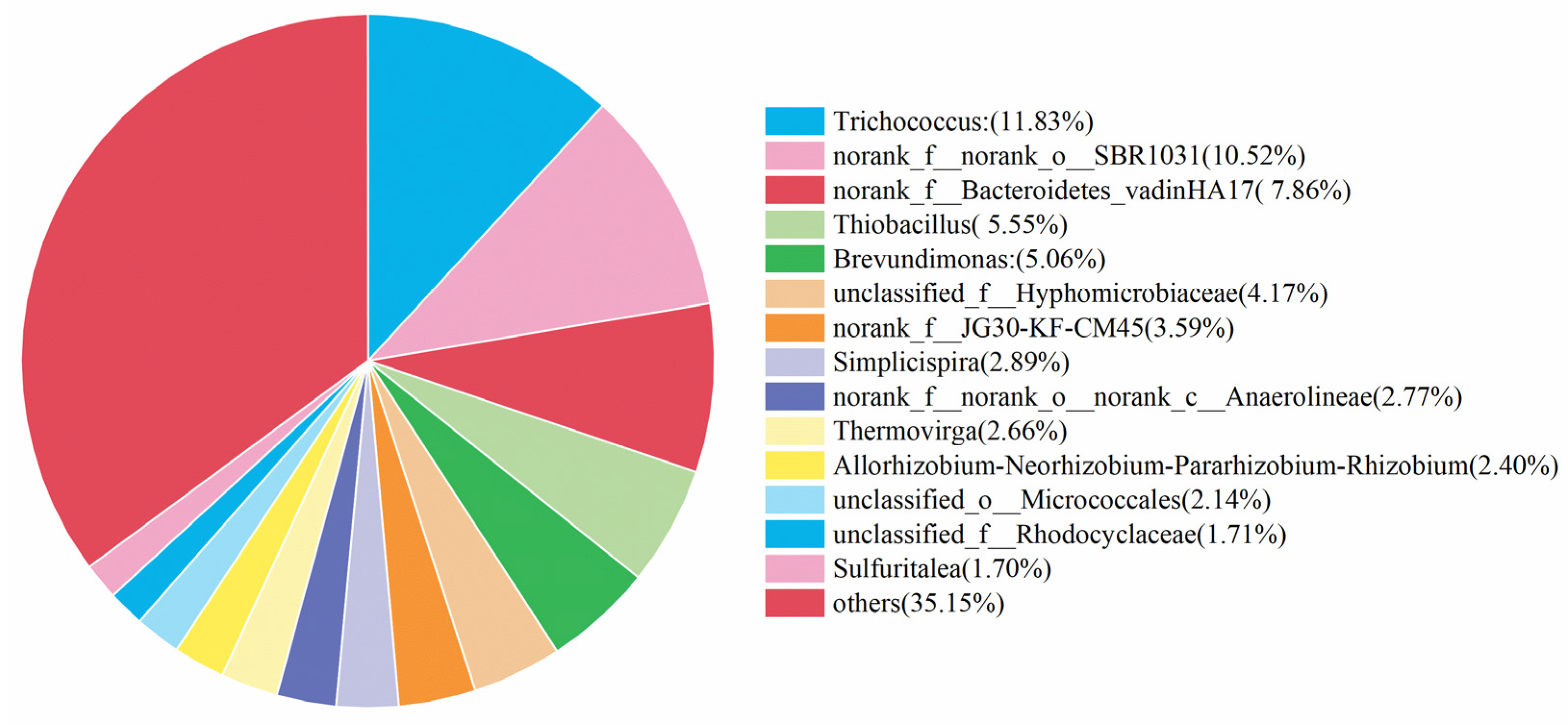
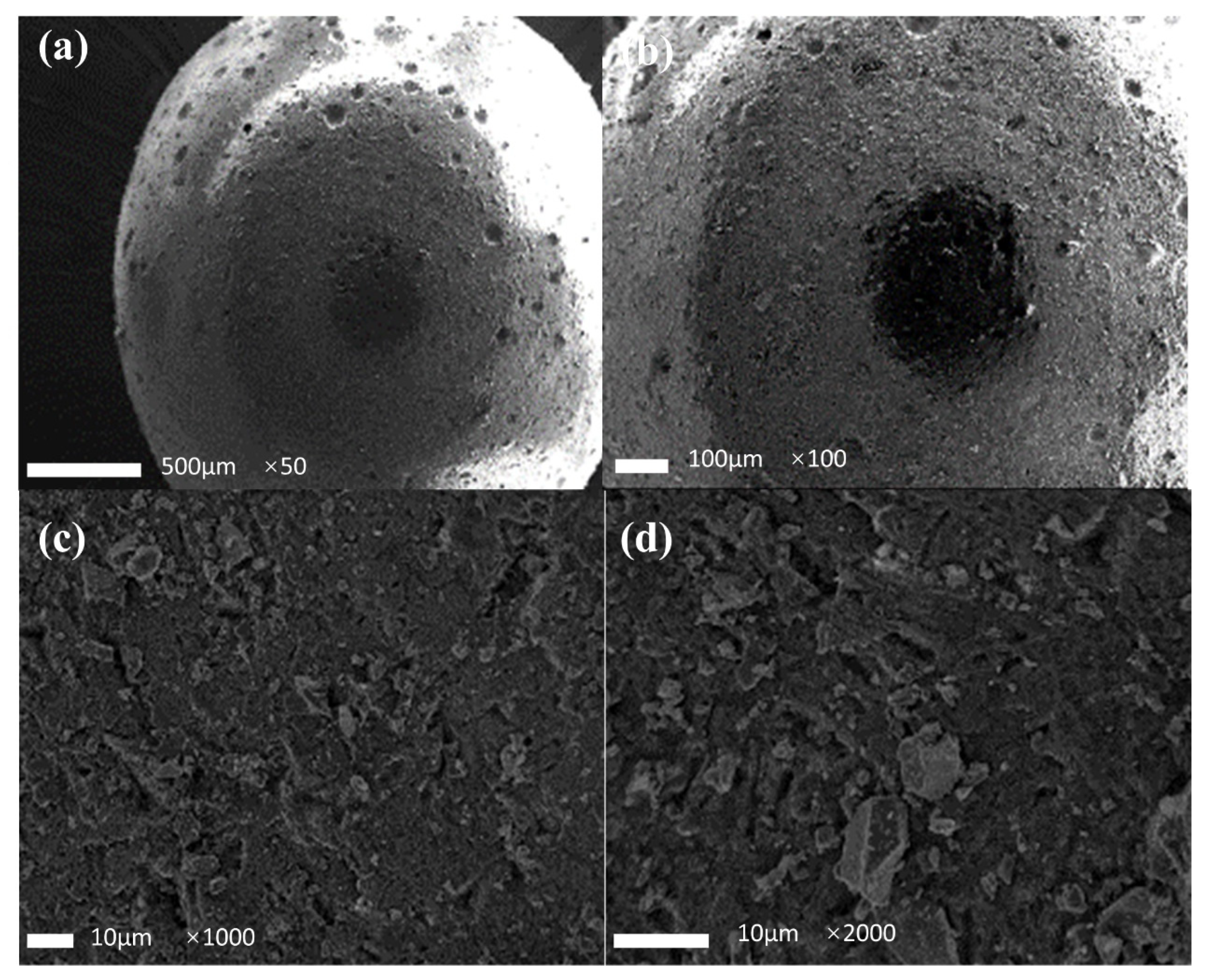
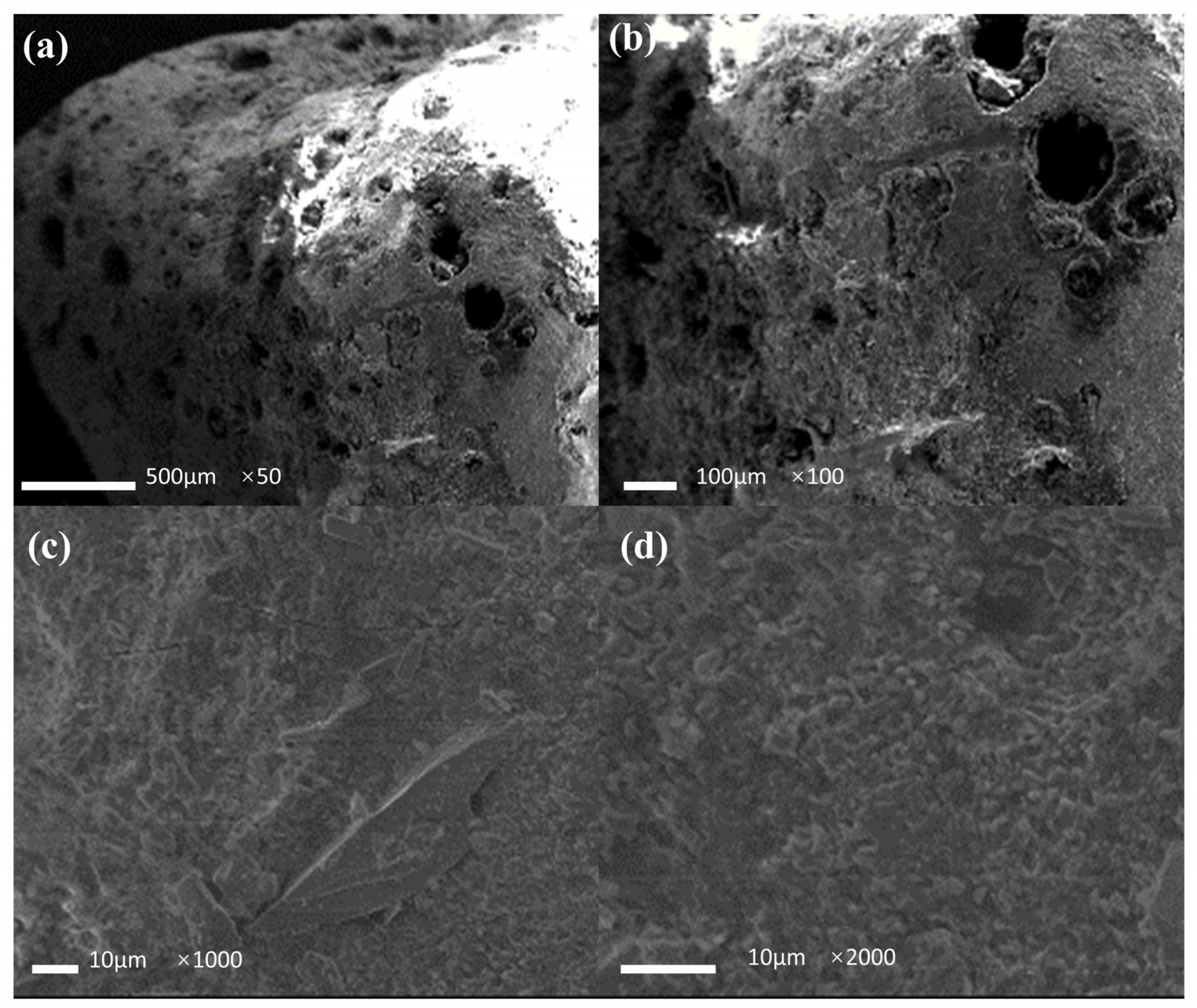
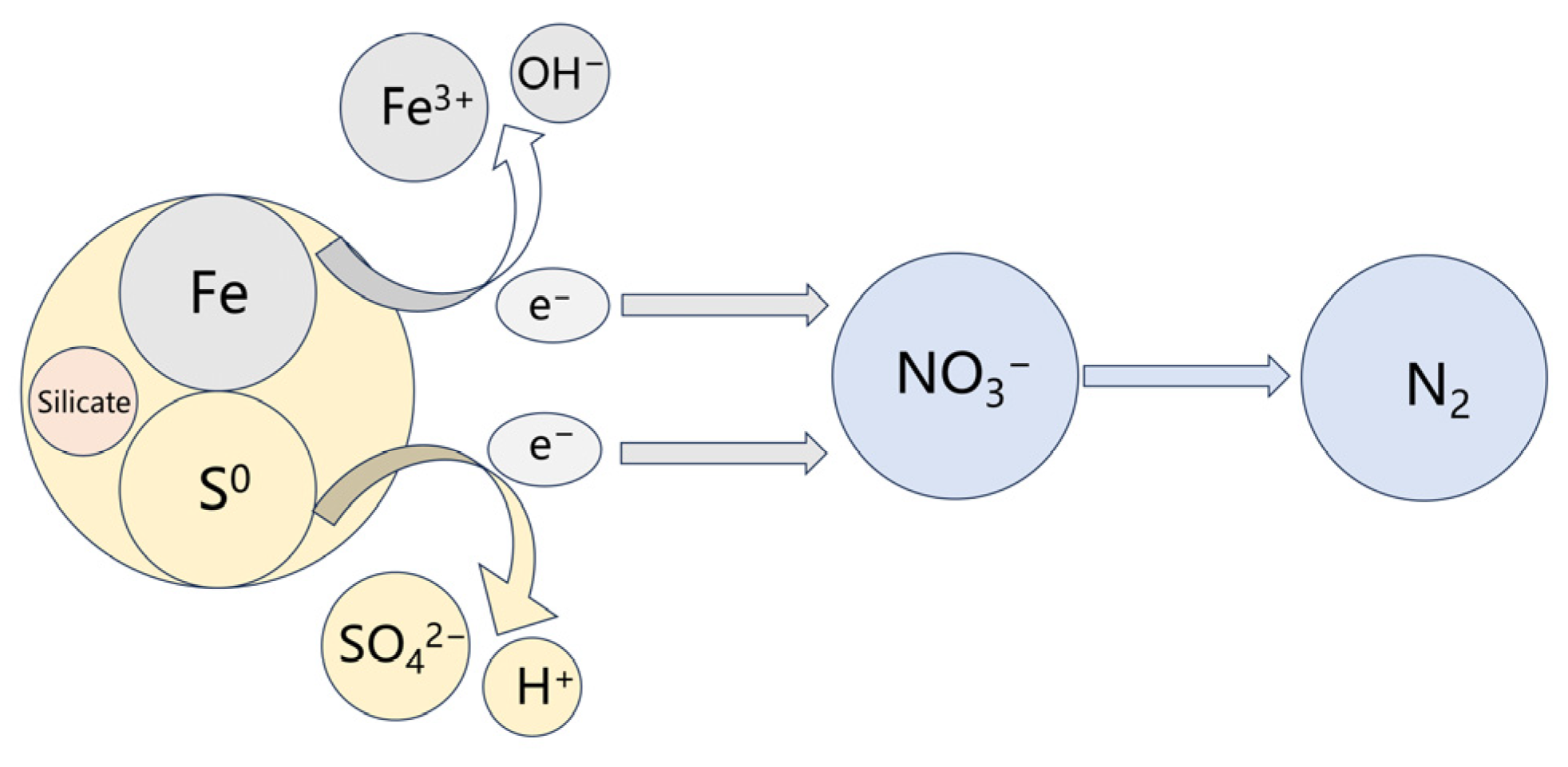
| Material | KNO3 | NH4Cl | KH2PO4 | NaHCO3 |
|---|---|---|---|---|
| Concentration (mg/L) | 108 | 2 | 0.5 | 252 |
| Experimental Phase | Time (d) | Flow Rate (mL/min) | HRT(h) |
|---|---|---|---|
| Phase I | 1–10 | 1.4 | 20 |
| Phase II | 10–20 | 1.9 | 15 |
| Phase III | 20–30 | 2.8 | 10 |
| Phase IV | 30–45 | 3.7 | 7.5 |
| Phase V | 45–70 | 5.6 | 5 |
Disclaimer/Publisher’s Note: The statements, opinions and data contained in all publications are solely those of the individual author(s) and contributor(s) and not of MDPI and/or the editor(s). MDPI and/or the editor(s) disclaim responsibility for any injury to people or property resulting from any ideas, methods, instructions or products referred to in the content. |
© 2024 by the authors. Licensee MDPI, Basel, Switzerland. This article is an open access article distributed under the terms and conditions of the Creative Commons Attribution (CC BY) license (https://creativecommons.org/licenses/by/4.0/).
Share and Cite
Hou, H.; Zhu, M.; Tang, G.; Liu, J.; Pan, S.; Zhou, H. Fabrication of a Sulfur/Steel Slag-Based Filter and Its Application in the Denitrification of Nitrate-Containing Wastewater. Water 2024, 16, 690. https://doi.org/10.3390/w16050690
Hou H, Zhu M, Tang G, Liu J, Pan S, Zhou H. Fabrication of a Sulfur/Steel Slag-Based Filter and Its Application in the Denitrification of Nitrate-Containing Wastewater. Water. 2024; 16(5):690. https://doi.org/10.3390/w16050690
Chicago/Turabian StyleHou, Haoyan, Mingxin Zhu, Gang Tang, Jiayang Liu, Shunlong Pan, and Hua Zhou. 2024. "Fabrication of a Sulfur/Steel Slag-Based Filter and Its Application in the Denitrification of Nitrate-Containing Wastewater" Water 16, no. 5: 690. https://doi.org/10.3390/w16050690
APA StyleHou, H., Zhu, M., Tang, G., Liu, J., Pan, S., & Zhou, H. (2024). Fabrication of a Sulfur/Steel Slag-Based Filter and Its Application in the Denitrification of Nitrate-Containing Wastewater. Water, 16(5), 690. https://doi.org/10.3390/w16050690








